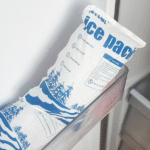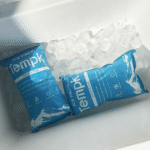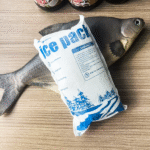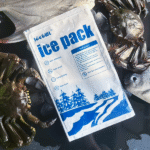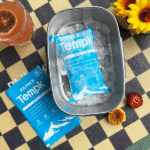Why FDA cold chain compliance matters
Keeping life saving medicines within their required temperature range isn’t just good practice—it’s the law. Pharmaceutical products like vaccines, biologics and gene therapies must typically be kept between 2 °C and 8 °C, while some need –20 °C or –70 °C to remain potent. A 2024 estimate valued the healthcare cold chain logistics market at USD 59.97 billion and predicted growth to USD 65.14 billion by 2025 and USD 137.13 billion by 2034. Yet studies show that around 30 % of shipments experience temperature excursions, leading to degraded products and regulatory penalties. In this article, you’ll learn what the FDA requires, how to achieve compliance, which technologies can help and what market trends are shaping the future. Updated November 16, 2025.

FDA cold chain requirements and temperature ranges: We unpack regulatory frameworks like FSMA, DSCSA and Good Distribution Practice, and explain why vaccines need 2–8 °C while advanced therapies may require cryogenic conditions.
Compliance strategies for 2025: Practical steps—equipment calibration, real time monitoring, recordkeeping, staff training and risk planning—ensure your cold chain meets 2025 requirements.
Emerging technologies: Discover how IoT sensors, blockchain, AI powered route optimisation, digital twins and solar powered units transform cold chain operations.
Market insights and trends: Review growth forecasts (USD 65.14 billion global healthcare logistics market and USD 20.6 billion packaging market in 2025) and explore sustainability, regional investments and regulatory updates.
What does the FDA require for cold chain regulation?
Core obligations: The U.S. Food and Drug Administration (FDA) enforces multiple regulations governing how temperature sensitive products are handled. Key rules include the Food Safety Modernization Act (FSMA), which emphasises preventive controls and supply chain traceability, and the Drug Supply Chain Security Act (DSCSA), which mandates interoperable electronic tracking to prevent counterfeit drugs. Pharmaceutical manufacturers and distributors must also comply with 21 CFR Part 117, Part 203 and Part 211 for food and drug quality, and adopt Good Distribution Practices (GDP) for storage and transport. Under GDP, companies must ensure accurate temperature control, validated equipment, secure storage, specialist packaging, complete recordkeeping and contingency plans.
Temperature ranges: Most vaccines and biologics must remain at 2 °C – 8 °C, while frozen or ultra cold products require –20 °C or –70 °C. Quality control guidelines note that excursions outside these ranges can degrade potency or even render the product dangerous. Maintaining product integrity means continuously monitoring temperature and humidity during storage and transport. GDP and Good Manufacturing Practices (GMP) require companies to document these conditions at all times.
Traceability and documentation: The FSMA Food Traceability Final Rule requires companies handling foods on the FDA’s Food Traceability List to maintain Key Data Elements for critical tracking events and provide this information within 24 hours. Originally scheduled for January 20 2026, the FDA has proposed extending the compliance date to July 20 2028. For prescription drugs, the DSCSA requires full traceability at package level. Exemptions allow connected trading partners to delay certain enhanced security requirements until May 27 2025 for manufacturers and repackagers, August 27 2025 for wholesale distributors and November 27 2025 for large dispensers. Small dispensers with 25 or fewer pharmacists are exempt until November 27 2026.
Understanding temperature ranges and monitoring devices
Keeping products within approved temperature bands requires more than a thermometer. Vaccines and common biologics must stay between 2 °C and 8 °C, while some gene therapies and specialty biologics require cryogenic environments of –70 °C or lower. Advanced cell therapies often need –80 °C to –150 °C portable cryogenic freezers for safe transit. Real time IoT sensors embedded in packaging or vehicles continuously measure temperature, humidity, light and shock events. Unlike traditional data loggers that record data for later analysis, these sensors transmit information instantly via cellular, satellite or low power networks, enabling immediate action when a deviation occurs.
| Temperature range | Example products | Equipment & packaging | Significance to you |
| 2 °C – 8 °C (controlled cold) | Most vaccines, insulin, monoclonal antibodies | Insulated shippers with gel packs, active refrigerated containers, IoT sensors | Ensures potency and regulatory compliance; typical range for primary care vaccines |
| –20 °C (frozen) | Certain viral vectors, bulk biologic intermediates | Dry ice packages, active refrigerated trucks, continuous data loggers | Maintains stability for products requiring frozen storage |
| –70 °C to –150 °C (ultra cold/cryogenic) | mRNA vaccines, cell & gene therapies | Portable cryogenic freezers with liquid nitrogen or phase change materials; vacuum insulated panels | Essential for next generation therapies; failure leads to rapid degradation |
Practical tips and advice
Assess your product’s range: Confirm the validated temperature range for each product and choose packaging that maintains that range without external power.
Use calibrated sensors: Ensure all probes and data loggers are calibrated and tested under real conditions; store calibration certificates as part of your quality documents.
Monitor continuously: Real time IoT devices with GPS alert you via text or app when temperatures deviate, allowing quick corrective actions.
Document everything: Keep temperature logs, calibration certificates, standard operating procedures and training records; these documents prove compliance during FDA audits.
Actual case: A rural clinic shipping biologics to remote areas used IoT sensors embedded in coolers. When an unexpected traffic delay caused temperatures to drift, the sensor alerted the driver and the dispatch team. They rerouted the truck to a nearby refrigerated warehouse, preventing product loss and demonstrating the value of real time monitoring.
How to maintain FDA cold chain compliance in 2025?
Achieving compliance requires a holistic approach—regulations alone won’t keep products safe. The following steps align with FSMA, DSCSA and GDP requirements.
- Calibrate and validate equipment:Every sensor, data logger and refrigeration unit must be validated under actual operating conditions and calibrated against standards such as NIST or UKAS. Calibration records must be archived and available to inspectors.
- Implement continuous monitoring:Use IoT sensors that transmit real time temperature, humidity and location data. These devices should comply with 21 CFR Part 11for electronic records and signatures, incorporating secure audit trails, user access controls and two factor authentication. Continuous monitoring reduces blind spots between manual checks.
- Maintain comprehensive documentation:Keep temperature logs, calibration certificates, risk assessments, standard operating procedures(SOPs), deviation reports, training records and corrective and preventive action (CAPA) documents. Electronic systems must ensure data integrity and be validated for accuracy and security.
- Train personnel:All staff handling temperature controlled products should understand the required temperature ranges, packaging, monitoring devices and emergency protocols. Regular refresher courses help maintain compliance; employees should know how to respond to temperature excursions and document actions taken.
- Conduct risk assessments and contingency planning:Evaluate points in your supply chain where excursions are likely—loading docks, customs, last mile delivery. Develop contingency plans such as arranging backup power supplies, deploying portable cryogenic freezers and identifying alternative transportation routes.
- Validate packaging and transport:Use packaging validated for your product’s temperature range. The pharmaceutical cold chain packaging market expects passive systems to hold a 72.5 % share in 2025and recommends small boxes (44.1 % share) for single dose drugs and clinical samples. Select packaging materials—phase change materials, vacuum insulated panels or dry ice—based on trip duration and destination climate.
- Leverage digital tools for traceability:Use cloud based platforms to aggregate data from all shipments, providing real time visibility and documentation. Blockchain solutions offer tamper proof records for high value products, creating immutable logs of temperature measurements and custody transfers.
Documentation and digital recordkeeping
Electronic record systems must comply with 21 CFR Part 11. This means they must have secure user authentication, audit trails and data integrity controls. Electronic signatures require validation and training to ensure that each entry can be traced to a specific user. Data should be stored redundantly with regular backups. When selecting software, consider integration with IoT sensors and packaging management systems to create a unified quality record.
Recommended internal links
Vaccine Storage Guidelines – An article explaining how to store vaccines safely within the 2–8 °C range.
How to Design SOPs for Cold Chain Logistics – Guidance on writing standard operating procedures for transport, packaging and emergency response.
Understanding Part 11 Compliance – A primer on validating electronic records and signatures.
Passive vs Active Packaging – A comparison of insulation technologies and when to use each.
What technologies enable an FDA compliant cold chain?
Technology is rapidly redefining the cold chain. In 2025, connected devices and digital platforms help companies move from reactive to proactive quality assurance.
IoT and real time monitoring
IoT sensors and smart packaging: Pharma Cold Chain 4.0 integrates sensors into shipping containers, warehouses and even individual product packages. These sensors monitor temperature, humidity, light exposure, shock events and GPS location. Unlike standalone loggers, IoT sensors transmit data in real time over cellular or satellite networks. When a sensor detects unsafe conditions, it automatically alerts logistics teams via text or app, enabling immediate intervention. Advanced sensors also measure vibrations and light to detect mishandling and packaging integrity.
Cloud based visibility platforms: Data from thousands of shipments can be aggregated into a single dashboard, giving companies a bird’s eye view of their entire cold chain. These platforms highlight exceptions, facilitate collaboration among suppliers, freight forwarders and healthcare facilities, and create complete digital audit trails. Integration with quality management systems automates deviation reports and corrective actions.
Blockchain and traceability
Blockchain creates an immutable ledger where every temperature reading, custody transfer and quality event is recorded. By providing a tamper proof audit trail, blockchain builds trust between manufacturers, distributors and regulators. Some pharmaceutical companies use blockchain exclusively for high value cell and gene therapies, where documentation directly affects reimbursement claims. In regions like the Middle East, blockchain pilots have synchronised customs data across borders, reducing clearance times and fraud risks.
Artificial intelligence and predictive analytics
AI transforms raw sensor data into actionable intelligence. Machine learning models analyse historical shipments, route characteristics and weather patterns to predict temperature excursions before they occur. AI systems recommend route modifications, adjust storage conditions and trigger preventive maintenance. In practice, AI reduces energy consumption by optimising transport routes, balancing speed, fuel use and temperature stability. In the Middle East, AI helps distributors forecast demand spikes around events like Ramadan and optimise inventory levels.
Solar powered storage and sustainable innovations
Solar powered cold storage units provide a sustainable solution for areas with unreliable electricity. These units reduce operating costs because solar power can cost 3.2 to 15.5 cents per kWh, compared with an average commercial electricity cost of 13.10 cents per kWh. Sustainability initiatives also include compostable packaging, energy efficient refrigeration and the use of phase change materials to reduce carbon footprints.
Digital twins and simulation
Digital twin platforms model entire cold chain networks, allowing companies to test new shipping routes, packaging options or facility locations virtually. These simulations help identify risks and optimise resources without exposing real products to potential excursions. Results from digital twins feed into AI algorithms, improving predictive accuracy and operational efficiency.
Portable cryogenic freezers
Next generation portable cryogenic freezers can maintain temperatures from –80 °C to –150 °C even in challenging environments. These freezers are essential for gene therapies and other ultra cold biologics. They are lightweight, rugged and can operate without continuous power, making them ideal for last mile delivery and field use.
Technology comparison table
| Technology | Primary purpose | Benefit to you |
| IoT sensors | Measure temperature, humidity, light, shock and location in real time | Enable immediate interventions and prevent excursions; integrate with Part 11 compliant systems |
| Blockchain | Record every event in a tamper proof ledger | Build trust, ensure regulatory compliance and streamline audits |
| Artificial intelligence | Analyse data to predict excursions and optimise routes | Reduce fuel costs, prevent delays and anticipate risks |
| Digital twins | Simulate logistics networks and packaging scenarios | Test changes before implementation and train AI models |
| Solar powered units | Provide off grid refrigeration and reduce energy costs | Improve sustainability and resilience in remote areas |
| Portable cryogenic freezers | Maintain ultra low temperatures (–80 °C to –150 °C) | Support gene therapy logistics and last mile delivery |
Tips for leveraging technology
Start small: Pilot IoT sensors on one route to gauge their impact on temperature control and process efficiency.
Integrate systems: Ensure your IoT platform communicates with quality management and ERP systems to centralise data and streamline audits.
Plan for cybersecurity: Protect sensitive shipment data by adopting multi factor authentication and encryption.
Use AI strategically: Apply AI to high risk routes or seasons first; gradually expand as you build confidence in the models.
Choose sustainable options: Evaluate solar units and reusable packaging to lower your carbon footprint and energy costs.
Actual case: A global vaccine manufacturer implemented blockchain to track shipments from Dammam to Rotterdam. The digital ledger synchronised customs data at both ends, cut clearance times and reduced fraud risks—demonstrating how end to end traceability enhances compliance and efficiency.
Market trends: How big is the FDA cold chain industry in 2025?
The cold chain isn’t just a regulatory necessity—it’s a booming industry. Market analysts estimate that the healthcare cold chain logistics sector is worth USD 65.14 billion in 2025, up from USD 59.97 billion in 2024. The market is forecast to reach USD 137.13 billion by 2034, growing at a CAGR of 8.63 %. Demand is driven by vaccines, biologics, cell and gene therapies, blood products and temperature sensitive medical devices. North America dominates the sector, accounting for 69.6 % of the region’s cold chain market share in 2024, and the regional market is projected to surge from USD 127.84 billion in 2024 to USD 580.64 billion by 2033, a CAGR of 18.6 %.
The pharmaceutical cold chain packaging market is another key segment. It’s projected to grow from USD 20.6 billion in 2025 to USD 83.2 billion by 2035, a robust 15 % CAGR. Passive packaging formats (using insulation and phase change materials) are expected to account for 72.5 % of packaging in 2025, while small boxes will hold a 44.1 % share because they are versatile and suitable for single dose drugs and clinical samples. The market also points to increasing adoption of phase change materials, vacuum insulated panels and autonomous refrigeration.
Market dynamics and segmentation
| Segment | 2025 estimate | Key trend |
| Healthcare cold chain logistics | USD 65.14 billion | Growth driven by vaccines and biologics; North America leads with 69.6 % share |
| Pharmaceutical packaging | USD 20.6 billion | Passive packaging (72.5 % share) and small boxes (44.1 %) dominate |
| North America cold chain | USD 127.84 billion | Expected to reach USD 580.64 billion by 2033; CAGR of 18.6 % |
| Biopharmaceuticals segment | Largest revenue share in 2024 | Growth due to monoclonal antibodies, mRNA vaccines and cell therapies |
| Vaccines segment | Fastest growth over forecast period | High demand for COVID 19 boosters and new immunisations |
These figures underscore the rising importance of cold chain infrastructure. As advanced therapies become mainstream and global distribution networks expand, maintaining strict temperature control is crucial for product safety and business success.
2025 updates: latest regulations and innovations
Regulatory developments and deadlines
FSMA Food Traceability extension: The FDA proposes extending the Food Traceability Final Rule compliance date from January 20 2026 to July 20 2028, giving industry more time to implement systems for Key Data Elements and Critical Tracking Events.
DSCSA enforcement: The FDA granted exemptions to connected trading partners until May 27 2025 (manufacturers and repackagers), August 27 2025 (wholesale distributors) and November 27 2025 (large dispensers), easing integration of enhanced drug distribution security requirements. Small dispensers (25 or fewer pharmacists) have until November 27 2026 to comply.
GDP tightening: Global regulators such as the FDA and EMA continue to tighten Good Distribution Practice expectations, requiring continuous monitoring, validated equipment, secure storage and documented contingency plans.
Technological innovations
Pharma Cold Chain 4.0: The integration of IoT sensors, AI analytics and blockchain creates intelligent, self optimising logistics networks that predict and prevent excursions.
Real time monitoring upgrades: Sensors now capture multiple parameters—temperature, humidity, light, shock and location—and transmit data via low power networks for immediate action.
Predictive route optimisation: AI algorithms evaluate millions of route combinations, balancing transit time, temperature stability and cost to minimise risk.
Blockchain pilots: Tamper proof digital ledgers provide end to end traceability and faster customs clearance.
Sustainability measures: Solar powered units and compostable packaging reduce energy consumption and carbon footprints.
Advanced packaging: Passive systems with phase change materials and vacuum insulated panels are becoming the industry norm, reducing dependence on external power.
Market insights
Continued growth: The healthcare cold chain logistics market is forecast to more than double by 2034, driven by biologics and expanding vaccine programs.
Regional investment: North America leads in revenue and infrastructure, while Asia Pacific is the fastest growing region. Middle Eastern countries like Saudi Arabia and the UAE are investing heavily in IoT, AI and blockchain to overcome extreme heat and high energy costs.
Packaging innovation: The market for pharmaceutical cold chain packaging will grow at 15 % per year, with small boxes and passive solutions dominating.
Sustainability focus: Companies are adopting solar power, energy efficient refrigeration and compostable packaging to meet regulatory and consumer expectations.
Frequently asked questions
Q1: What temperature range does the FDA require for vaccines?
Most vaccines must be stored and transported at 2 °C–8 °C. Some new biologics and gene therapies require frozen or ultra cold conditions, such as –20 °C or even –70 °C, to maintain stability. Always verify the approved range for each product and use packaging that can maintain it.
Q2: How do IoT sensors help maintain FDA cold chain compliance?
IoT sensors continuously monitor temperature, humidity, light and shock events inside packaging or vehicles. When conditions drift outside the validated range, they alert operators via text or app, enabling immediate corrective actions. Real time data also feeds into quality systems, creating an audit trail that satisfies Part 11 requirements.
Q3: What documentation is required for FDA cold chain audits?
You must maintain temperature logs, calibration certificates, SOPs, deviation reports, risk assessments, training records and corrective action plans. Electronic records must comply with Part 11, incorporating secure user access, audit trails and validation.
Q4: When will the FDA begin enforcing FSMA Food Traceability and DSCSA rules?
The FDA proposes to extend the Food Traceability Final Rule compliance date to July 20 2028, giving industries more time to establish recordkeeping systems. Under the DSCSA, connected trading partners must comply with enhanced security requirements by May 27 2025 (manufacturers and repackagers), August 27 2025 (distributors) and November 27 2025 (large dispensers), while small dispensers have until November 27 2026.
Q5: What packaging types dominate the pharmaceutical cold chain market?
Passive packaging systems—using insulation and phase change materials—are projected to hold 72.5 % of the market in 2025 because they maintain temperature without external power and are cost effective. Small boxes account for 44.1 % of the packaging market due to their versatility for single dose shipments and clinical trial samples.
Summary and recommendations
Key takeaways: Regulatory compliance isn’t optional. The FDA enforces FSMA, DSCSA and GDP requirements that demand continuous monitoring, validated equipment, secure packaging, comprehensive documentation and trained personnel. Most vaccines need 2–8 °C storage, while some biologics require –20 °C or –70 °C conditions. Technology is transforming the cold chain: IoT sensors provide real time data, AI predicts problems, blockchain ensures traceability and digital twins allow safe experimentation. The healthcare cold chain logistics market is valued at USD 65.14 billion in 2025 and growing rapidly.
Recommended actions:
Evaluate your current cold chain: Identify temperature sensitive products, their required ranges and potential risks. Document processes and assess equipment calibration.
Implement real time monitoring: Adopt IoT sensors and cloud platforms to detect excursions immediately. Integrate with quality systems for automated documentation.
Strengthen documentation and training: Ensure all records comply with Part 11, and train staff to handle deviations and emergencies. Use risk assessments and contingency plans to address weak points.
Adopt advanced technologies: Pilot blockchain for high value shipments, AI for route optimisation and digital twins for planning. Explore sustainable solutions like solar powered units and compostable packaging to reduce costs and emissions.
Stay ahead of regulations: Monitor FDA announcements on FSMA and DSCSA deadlines. Engage with industry associations and consultants to interpret guidance and implement necessary changes. Plan early for the 2028 Food Traceability Rule compliance.
About TemPk
TemPk is a leader in temperature controlled logistics and monitoring solutions. We specialise in IoT enabled sensors, validated packaging and cloud based dashboards that keep your products within the required temperature ranges. Our systems integrate with existing quality management software to simplify compliance with FDA and EMA regulations. Clients benefit from real time visibility, tamper proof audit trails and predictive analytics that prevent costly excursions. We also provide consulting services to help you design SOPs, train staff and prepare for regulatory audits.
Take the next step: Contact TemPk to discuss your cold chain needs. Our experts will assess your current processes, recommend tailored solutions and help you achieve full FDA compliance in 2025 and beyond.
















